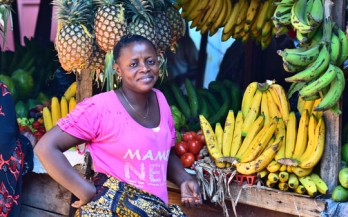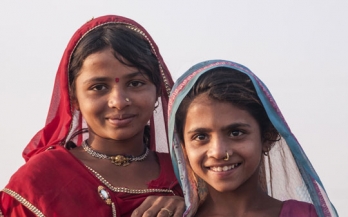NOURISH OUR WORLD (NOW) seeks to put the power of demand creation at the core of improving the quality of diets in developing countries, especially among low-income consumers. This is because a good quality diet is central to tackling all forms of malnutrition.
Most people, including low-income households in developing countries, buy their food from markets, both formal and informal. Therefore, it makes sense to treat them as consumers. At GAIN, our aim is to enable these consumers to improve their diets through increasing consumption of nutritious and safe foods, because a good diet is central to tackling all forms of malnutrition.
Every year UNICEF issues an authoritative review called the “State of the World’s Children”. GAIN is proud to have worked closely with UNICEF on its 2019 report issued in London yesterday. The focus of this year’s report is on nutrition and diets. The State of the World’s Children last addressed malnutrition 20 years ago, and much has changed since then.
Adolescence presents an opportunity to influence diet, which impacts present and future health outcomes, yet adolescent diets globally are poorly understood. This study estimated mean frequency of consumption and prevalence of less-than-daily fruit and vegetable consumption, at-least-daily carbonated beverage consumption, and at-least-weekly fast-food consumption among school-going adolescents.
UNICEF released today its flagship report "State of the World’s Children 2019", which – for the first time in many years - focuses on children, food and nutrition. GAIN actively contributed to several sections of the report, particularly chapter 2, which looks at adolescent diets in different parts of the world.
Poor nutrition is an untrenched global challenge that impacts many of the 17 UN Sustainable Development Goals. Solving it will require a significant capital infusion in a more local, more sustainable, global food system able to deliver more affordable healthy food. That’s a big opportunity for impact investors.
This factsheet describes the nutritional content of eggs. Eggs are a rich source of protein, essential fatty acids, vitamins, and minerals.
An egg is formed of two main parts, the egg white (albumen) and the egg yolk. The white contains mostly water, proteins and some minerals.
This factsheet describes the nutritional benefits of eggs for key target populations. Eggs are among the best food sources to improve diet quality in infants, as they contain nutrients which help brain development and physical growth.
The Global Alliance for Improved Nutrition (GAIN) is pleased to announce the launch of "A menu of actions to shape urban food environments for improved nutrition", a reference resource developed in cooperation with the Milan Urban Food Policy Pact (MUFPP) and the RUAF Global Partnership.
The "Menu of actions to shape urban food environments for improved nutrition" has been developed by GAIN, the Milan Urban Food Policy Pact (MUFPP) Secretariat and the RUAF Foundation as a reference document that seeks to meet this need. It contains a large number of examples of policies and programmes, from countries in every region and in all income bands, to inspire and encourage other cities to initiate actions.










